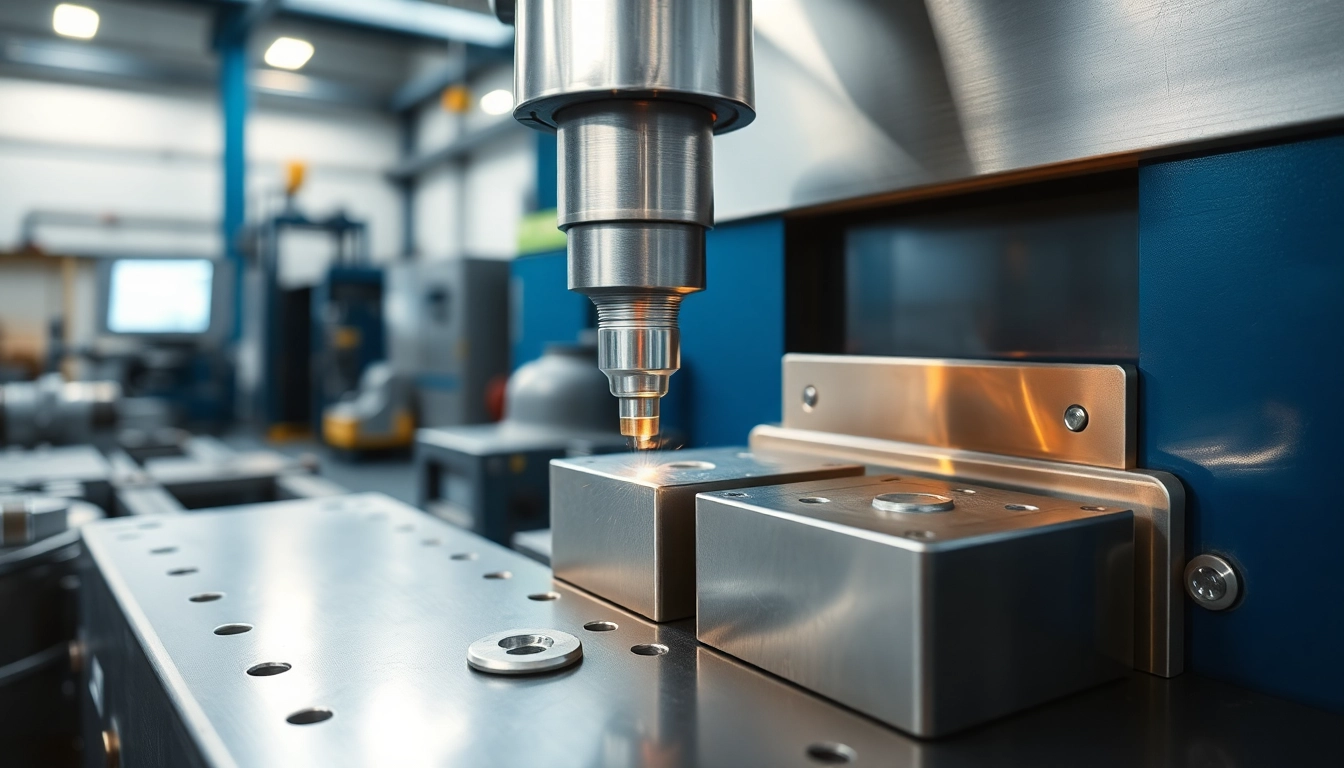Introduction to Laser welding machine Technology
The evolution of welding technology has led to innovative approaches that provide greater precision, efficiency, and versatility. Among these, the Laser welding machine stands out as a transformative tool for metal joining processes across multiple industries. Its emergence has not only redefined how metals are fused but has also introduced new capabilities in areas that were previously unattainable with conventional welding methods.
What is a Laser welding machine?
A Laser welding machine employs concentrated laser beams to melt and fuse materials together. By directing the laser to a specific focal point, high-energy density is achieved, which allows for the rapid melting of metal surfaces and the formation of a weld pool. Once the laser beam is removed, the molten metal solidifies, creating a strong bond between the base materials. The process is often characterized by its speed, cleanliness, and ability to produce precise, high-quality welds ideal for complex geometries.
Core Components of Laser welding machine
The architecture of a Laser welding machine involves several key components that work in tandem to ensure optimal performance:
- Laser Source: This is the heart of the machine, where the laser is generated. Common types include fiber lasers, CO2 lasers, and solid-state lasers, each offering distinct advantages based on the application.
- Optical Systems: These systems direct the laser beam toward the workpiece. This includes focusing lenses that precisely shape and direct the beam.
- Control Systems: Electronic components that determine the laser’s intensity, pulse duration, and movement speed. This ensures a consistent weld quality controlled by sophisticated computer software.
- Cooling Systems: Given the high-energy nature of laser welding, cooling systems are necessary to manage excess heat and maintain both the laser source and surrounding components at optimal temperatures.
- Safety Systems: Due to the high-power lasers used, comprehensive safety measures including protective housing, interlocks, and monitoring systems are essential.
Applications of Laser welding machine in Industries
Laser welding machines find applications across a variety of sectors:
- Aerospace: Employed for lightweight and high-strength joins in aircraft components, where precision is critical.
- Automotive: Utilized in manufacturing processes for body structures, engine parts, and electrical components, enhancing production rates and quality.
- Electronics: Applied for precision welding in intricate electronic devices, ensuring minimal thermal distortion.
- Medical Equipment: Ideal for joining biocompatible materials in the creation of surgical instruments and implants.
- Metal Fabrication: A crucial tool for fabricators dealing with diverse materials and complex assembly needs.
Advantages of Using Laser welding machine
Precision and Efficiency in Metal Joining
The precision of a Laser welding machine is unparalleled, enabling welds to be made at very tight tolerances. This accuracy reduces the need for extensive post-weld machining, resulting in significant time savings and consistent quality in production runs.
Cost Savings with Laser welding machine
While the initial investment in a Laser welding machine may be higher than that of conventional welding equipment, the long-term cost efficiency is notable. Reduced material wastage, shorter processing times, and lower energy consumption combine to offer substantial savings over time.
Environmental Benefits of Laser welding machine
Laser welding processes generate fewer emissions and waste products compared to traditional methods. The concentrated energy used during the welding process requires less material and minimizes the introduction of pollutants into the environment. This eco-friendliness appeals to organizations aiming to enhance their sustainability practices.
Challenges in Laser welding machine Operations
Common Technical Issues
Despite their many advantages, Laser welding machines are not without challenges. Technical issues such as inconsistent weld quality, equipment misalignment, and inappropriate laser parameters can lead to defects. Regular troubleshooting and adjustments are often necessary to maintain optimal operation.
Safety Measures for Laser welding machine
Operating a Laser welding machine comes with inherent risks. Safety measures must be enforced to protect operators from laser exposure, which can cause severe injuries. This includes the use of protective eyewear, barriers, and training in safety protocols to prevent accidents.
Mitigating Risks with Proper Training
Ensuring that operators are adequately trained on the use and safety precautions of Laser welding machines is critical. Comprehensive training programs that cover operational techniques, safety standards, and emergency protocols must be implemented to mitigate risks associated with laser operations.
Best Practices for Optimal Laser welding machine Performance
Regular Maintenance of Laser welding machine
To maximize reliability, Laser welding machines require routine maintenance. This includes cleaning optical components, checking laser alignment, and ensuring that all mechanical parts function smoothly. Establishing a maintenance schedule helps anticipate and resolve issues before they impact production.
Calibration and Setup Procedures
Proper calibration of laser parameters before initiating a weld is essential for achieving desired results. Parameters such as laser power, speed, and focal length should be tailored to specific materials and joint configurations. A systematic setup procedure can enhance both accuracy and efficiency.
Using the Right Materials for Laser welding machine
The choice of materials directly affects the quality of the weld. Understanding the compatibility of different metals, as well as their thermal and physical properties, is crucial. Aligning material selection with the capabilities of the Laser welding machine can significantly improve welding outcomes.
Future Trends in Laser welding machine Technology
Advancements in Laser welding machine Features
Continuous advancements in Laser welding machine technology are leading to enhanced features such as adjustable pulse rates, improved beam quality, and smarter integration with production management systems. These developments enable even greater control and flexibility for operators.
Integration of Automation with Laser welding machine
As automation becomes increasingly commonplace in manufacturing, Laser welding machines are not being left behind. The integration of robotics with Laser welding machines is paving the way for improved speed, accuracy, and the ability to operate in more hazardous environments.
Impact of Industry 4.0 on Laser welding machine
Industry 4.0 is revolutionizing the manufacturing landscape, bringing about smarter operations and data utilization. Laser welding machines are expected to incorporate IoT capabilities to monitor performance, predict maintenance needs, and enhance overall operational efficiency.




